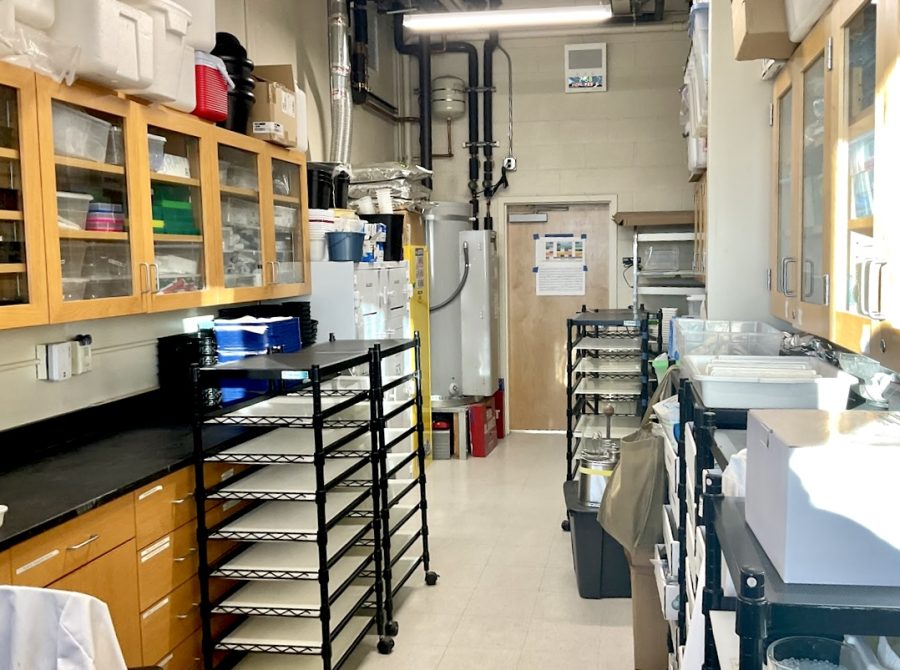The Backbone of In-Class Science Labs
A dive into how lab materials and equipment reach science classrooms across campus
Scientific equipment and materials go through an unseen network in finding their way to the hands of science students at Mitty. The dedicated staff of the science department makes decisions on many aspects of the process including the types of products to buy, management of the budget, and methods for storing and preparing materials, just to name a few. They keep classes ranging from biology to environmental science engaging with hands-on laboratory experiences for students.
Mrs. Thuy-Anh Nguyen, lab coordinator and designer, explains, “When I find interesting equipment, I discuss it with the rest of the science department. [Then] I’ll usually buy a piece of the equipment and test it out. If I think it’s a good investment, we purchase more.” This process is what initially filters what classes receive. Sometimes the department tries labs with students in the Advanced Science Learning summer course before integration into the main curriculum. One recently acquired it, the ‘dry bath’ which heats and incubates samples without liquid, has proven a good investment, helping biology students analyze DNA samples with clear results.
Another purpose of the department’s spending is to increase existing resources. Over years past, Mitty has been purchasing new micropipettes, an essential tool in biology and chemistry labs. “When I first started working here, we had biotech, and we only had 16 pipettes… usually a single pipette for 4 students,” Mrs. Nguyen recalled. Over the course of almost thirty years, she worked with the team’s budget to get to a point where almost every student can use one simultaneously. It adds to the essential purpose of having each student get hands-on experience. While these are among the most notable of their recent undertakings, the department is working on similar projects with an ever-changing variety of resources and materials.
Lab material and equipment is stored and assembled in two science storage centers. The 300 wing is dedicated mostly to biology and environmental science classes, while one in the 700 wing is dedicated to chemistry. Furthermore, cabinets located inside each science classroom contain resources used for some labs. For items with special storage needs, the sciences department makes use of multiple refrigeration units located inside the science storage centers, as well as some classrooms.
When it is time to perform a lab in-class, materials necessary for that particular lab are divided into trays and kits. They are assembled by both staff and student teacher-assistants and are allocated per class size.
Labs are the foundation of the science curriculum, aiding the development of critical thinking and understanding. Staff like Mrs. Nguyen manage everything from researching equipment to assembling lab kits. While often hidden as “behind the scenes” operations, their work is crucial in bringing such valuable educational experiences to students.


